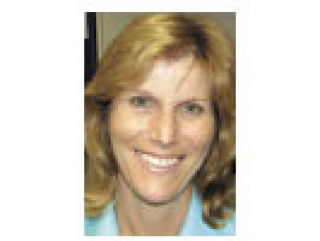Leslie Lehnhoff is the cultural diversity liaison for the City of Auburn, its bridge builder to the ethnic communities.
Q. Tell us a little about yourself.
A. I grew up primarily in California but spent some time in Massachusetts. I went to many different colleges. I went to Santa Rosa (Calif.) Junior College, the Berkeley School of Music in Boston and San Francisco State University. I did music as my undergraduate and graduate work. I graduated from San Francisco State in 1988 and went to UC Riverside for my master’s degree in music in 1991. After the music thing, I worked in long-term care and did music therapy. Sometimes I still dabble in that by singing and playing in retirement homes. I love doing that, but it’s not a living.
Q. We’ve heard you speak fluent Russian?
A. I’ve never taken any official classes in it. I am completely self-taught. I started studying the Russian language on my own after doing mission trips to the former Soviet Union. Once the Berlin Wall collapsed, it was open. People could go, so we went and built schools and churches. I have gone back five times – to Belarus, Latvia, Ukraine and Russia. I came back after the first trip and realized I had to learn the language and this was the time to do it. It was 1994 and I wasn’t working a whole lot. I had a young child at home, I was kind of a stay-at-home mom teaching piano lessons on the side. Fortunately, we went back again and again and I got to practice it. Then we moved to Washington, and lo and behold, this is like a little Russia-Ukraine with many, many people to work with and speak to. I took two years of Spanish in high school. But ironically, I understand a good portion of what I hear, although I can’t speak it very fast, and I don’t have the vocabulary there. Part of the reason is that every time I go to speak Spanish, the Russian crowds it out.
Q. Tell us about your job
A. What I do is implement cultural awareness programs that engage all citizens to respect one another, realizing our unique differences and embracing things we have in common. In accordance with that, my job is to build bridges between, first of all, the city government and citizens of all ages and socio-economic backgrounds and ethnicities. Second, I build good bridges between the citizens themselves, for instance between the Russians and Ukrainians. They’re different. We see them walking down the street and sometimes we make blanket statements and say, “Oh, they’re Ukrainian,” when in fact they’re Russian, or vice versa. They themselves have corrected me when I have called one the other or said to me, “Please speak Russian, because I speak Russian.’ My comprehension of Ukrainian is much less.
Then there are the Latino groups here. You have Latinos from Mexico, but you also have a subgroup that’s indigenous called the Purepecha. They are an indigenous ancient group from one of the states in Mexico, and they have told me that even in Mexico their group is somewhat looked down upon. So you have a hierarchy that transposes itself here, and you have the Latino mix of people, but within that group you have distinct differences.
The idea here is to build bridges even among the diverse group itself to try and bridge some of those differences and heal wounds. One common ground is that they have all been transplanted here to a foreign land, whereas if they were in their homeland, they’d still be Russian and Ukrainian and not talking. Here, they have something in common, which is that they don’t understand things here. They don’t understand the law here or how to really be good citizens.
Q. How long have you been with the city?
A. I started in April, and the very first thing that I did was I tried and succeeded in passing through the City Council an initiative that become a resolution. In essence, it proclaims that this city is an inclusive city. It is fairly significant, yet the language of it is relatively benign. It’s not going to cause people to wring their hands and say, “Oh no, Auburn is now going to open the floodgates and let anybody and everybody in.” But it is saying that those who choose to live here, regardless of age, socioeconomic background, gender, ethnicity or race have the rights and privileges of being engaged in the Auburn community. It doesn’t turn a blind eye or condone illegal immigration. It doesn’t really address illegal immigration.
I view myself as a go-between between these immigrants and the city government, which probably feels far off and distant to most of them. I want to bridge that gap so they can begin to feel they are part of the community, that they have a voice or a source of information.
Q. What’s your latest project?
A. I’m putting together a brochure called The Faces of Auburn and there will be features in there on some of the main ethnic groups. We can’t cover everyone, but we can do something on those that are statistically the largest — the Latinos, Russians, Ukrainians, Eastern Europeans, Koreans, Punjabi, Marshall Islanders, Somalians and maybe the Sudanese. It’s just a little information in a brochure that we can hand out at events at fairs. People will read two paragraphs and say, “Wow, I didn’t know these people were here.” Yeah, and they’re right in the apartment next to you.
Leslie Lehnhoff


